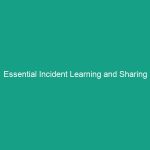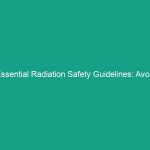Introduction
Good morning team! Today, we’re going to discuss an important topic: “Discover Three Self-Centered Reasons to Work Safely for Your Benefit.” Safety in the workplace isn’t just about following rules; it has a significant impact on your personal life and career. Understanding how working safely Benefits you can motivate you to adopt safer practices. So, let’s dive into why prioritizing Safety is not just a company policy but also a personal investment.
Understanding the Importance of Safety
Working safely means taking proactive measures to prevent accidents, injuries, and illnesses in the workplace. It involves understanding the Hazards associated with your tasks and knowing how to mitigate them. Many people believe that safety is merely about compliance with Regulations, but it goes beyond that. It directly affects your well-being, productivity, and job satisfaction.
Some misconceptions include the belief that safety protocols slow down work or that accidents won’t happen to them. However, the reality is that safety practices save time and lives.
Key Hazards, Risks, and Safety Considerations
Every workplace has its unique hazards. Here are some common risks that you might encounter:
- Slips, Trips, and Falls: Often caused by wet floors, cluttered walkways, or uneven surfaces.
- Manual Handling Injuries: Resulting from lifting, carrying, or moving items without proper techniques.
- Electrical Hazards: Risks associated with faulty wiring or exposed electrical components.
- Hazardous Materials: Exposure to chemicals or toxic substances without appropriate protective gear.
Ignoring safety protocols can lead to serious consequences, including injuries, lost time, and decreased morale. Understanding these risks is the first step to ensuring a safer workplace.
Three Self-Centered Reasons to Work Safely for Your Benefit
Now that we have a clear understanding of safety and its importance, let’s explore three compelling reasons to work safely that are centered around your personal benefit:
1. Protect Your Health and Well-Being
Your health is your most valuable asset. By following safety protocols, you significantly reduce the risk of accidents and injuries that can lead to long-term health issues. Prioritizing safety means:
- Preventing workplace injuries that could affect your ability to work and enjoy life.
- Reducing stress and anxiety that comes with worrying about potential hazards.
- Promoting a healthier lifestyle that leads to increased energy and productivity.
Remember, a safe work Environment is a healthy work environment.
2. Enhance Your Job Performance and Productivity
Working safely not only protects you but also enhances your overall job performance. When you prioritize safety, you can:
- Focus more on your tasks without the distraction of worrying about potential hazards.
- Reduce downtime caused by accidents, which means you can complete projects on time.
- Build a reputation as a reliable employee who values safety, making you a key asset to the team.
Improved performance not only benefits you but also contributes to the company’s success.
3. Boost Your Career Prospects
Employers value safety-conscious employees. By demonstrating a commitment to safety, you position yourself for career advancement. Here’s how safety can impact your career:
- Increased employability: Employers prefer candidates with a strong safety mindset.
- Opportunities for leadership roles: Safety leaders are often promoted to oversee teams or projects.
- Enhanced skills: Engaging in safety Training can provide you with valuable skills that are transferable across industries.
Ultimately, your dedication to safety can open doors to new career opportunities and growth.
Best Practices, Procedures, & Actionable Advice
To effectively work safely, here are some Best Practices you can implement immediately:
- Familiarize Yourself with Safety Protocols: Know the Safety Guidelines relevant to your job and ensure you follow them.
- Report Hazards: If you notice a potential hazard, report it immediately to your supervisor. Don’t wait for someone else to do it.
- Use Personal Protective Equipment (PPE): Always wear the required PPE for your tasks, including helmets, gloves, and Safety Goggles.
- Participate in Safety Training: Engage actively in safety training sessions to improve your knowledge and skills.
- Maintain a Clean Work Area: Keep your workspace organized and free of clutter to minimize risks of slips and falls.
By implementing these Best Practices, you can create a safer environment for yourself and your colleagues.
Regulations, Standards, and Compliance
Understanding relevant safety regulations is crucial. Compliance with OSHA (Occupational Safety and Health Administration) standards is not just a legal requirement; it’s essential for your protection. These regulations provide guidelines for:
- Workplace safety and health requirements.
- Employee training and safety programs.
- Reporting and addressing workplace hazards.
Adhering to these Standards not only protects you but also enhances the overall safety culture of the workplace.
Employee Engagement & Discussion
Now, let’s open the floor for discussion. I’d like to hear your thoughts on the following questions:
- What safety challenges have you encountered related to your tasks?
- How do you think we can improve our safety practices as a team?
- What personal strategies do you use to stay safe at work?
Your input is invaluable in creating a culture of safety. Let’s work together to ensure we all go home safe and sound at the end of the day.
Conclusion & Key Takeaways
To sum up, working safely is not just about following rules; it’s about protecting your health, enhancing your productivity, and boosting your career prospects. Remember, safety is a personal investment that pays off in numerous ways. I encourage each of you to prioritize safety not only for your benefit but for the benefit of your teammates as well.
Thank you for your attention and commitment to making our workplace a safer environment. Let’s continue to look out for one another and make safety a priority every day!


